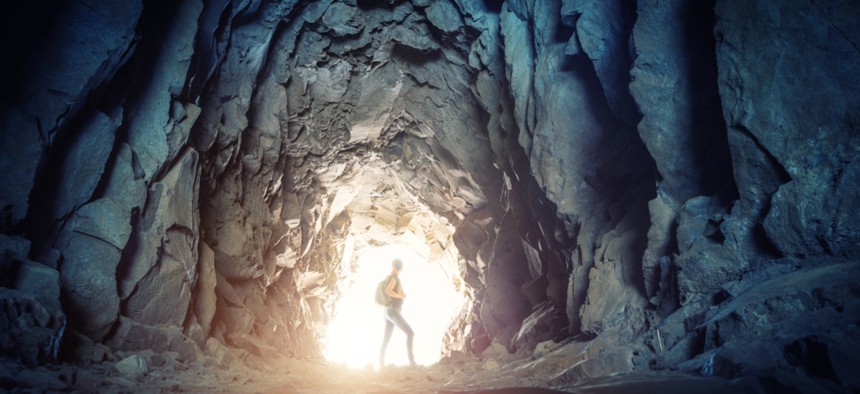DARPA Wants to Make Underground Maps on the Fly

Nomad_Soul/Shutterstock.com
The agency is challenging teams to build systems that chart caves, tunnels and underground urban infrastructure.
Finding your way through caves and tunnels is both difficult and extremely dangerous, but the Pentagon’s research office wants to build technology that can navigate underground environments while humans stay on the surface.
The Defense Advanced Research Projects Agency is finalizing teams for its Subterranean Challenge, or SubT, a three-year competition to build systems that can rapidly map and search often treacherous underground areas.
The agency on Thursday awarded a $4.5 million contract to Virginia-based iRobot Defense Holdings and a $750,000 contract to Michigan Technological University to participate in the challenge. A third team, Scientific Systems Company Inc., joined the program on July 31 with a $492,000 contract.
“Even under ideal conditions, these complex environments present significant challenges for subterranean situational awareness,” DARPA wrote in the program announcement. “However, in time-sensitive scenarios, whether in active combat operations or disaster response settings, warfighters and first responders alike are faced with a range of increased technical challenges, including difficult and dynamic terrains … severe communication constraints, and expansive areas of operation.”
Those conditions often make it too risky to deploy personnel, but existing technologies lack the endurance, navigation and sensing capabilities to replace humans on the job, DARPA said.
Through the program, DARPA aims to develop a versatile technology that military personnel and first responders can use to better understand underground environments. Such systems could lead to breakthroughs in infrastructure inspection, mining, construction and archeology, it said.
The competition is divided into two parts: a systems track and a software track. Systems participants must build technologies that can navigate a physical test course while software teams would demonstrate products in a simulated environment.
Teams must prove their technologies’ worth in three different environments—underground tunnels, caves and urban infrastructure like subway systems—with scores based on speed, maneuverability, mapping accuracy and object identification. The program includes one-off demonstrations in each environment, and a final event that tests systems in all three spaces at once.
DARPA expects to award some $30 million to fund additional competition participants, and winners will receive an additional $4 million in prize money. Self-funded teams are also allowed to enter the contest.
The agency will host a competitors day for the program on Sept. 27. Submissions closed in March.
NEXT STORY: How to Ace Your Chatbot Interview



